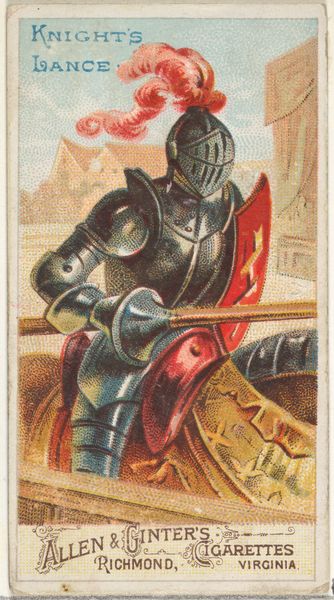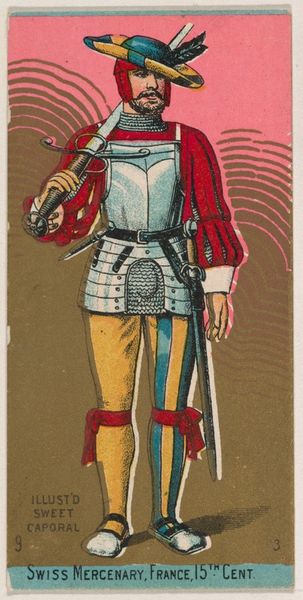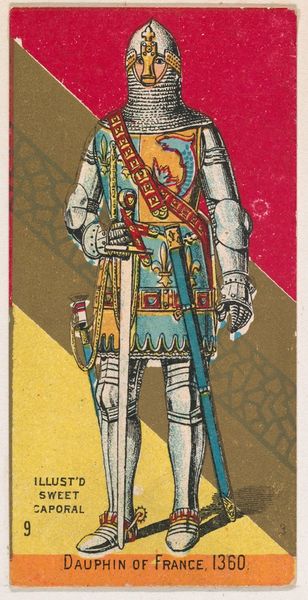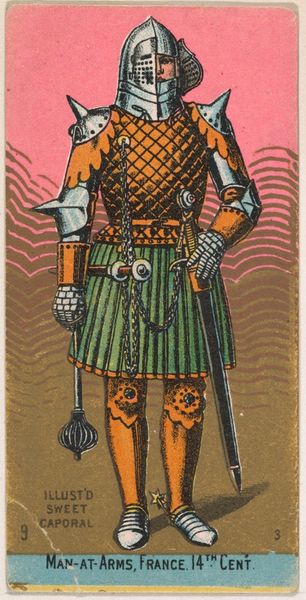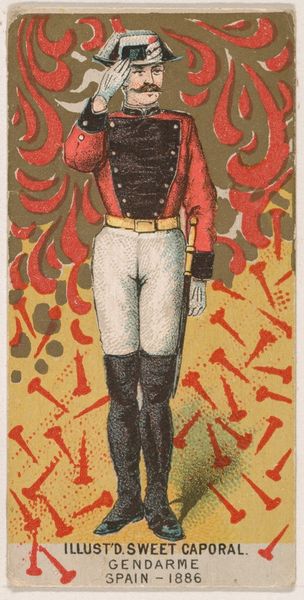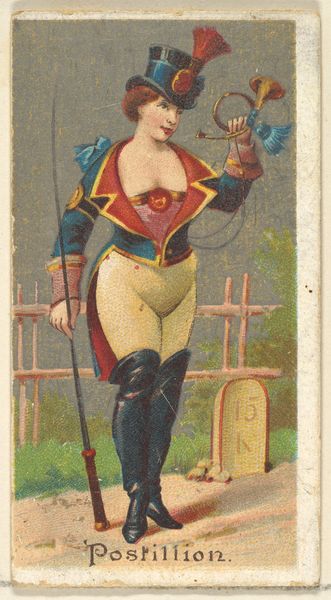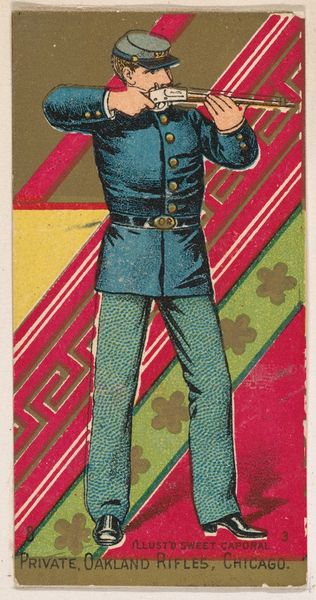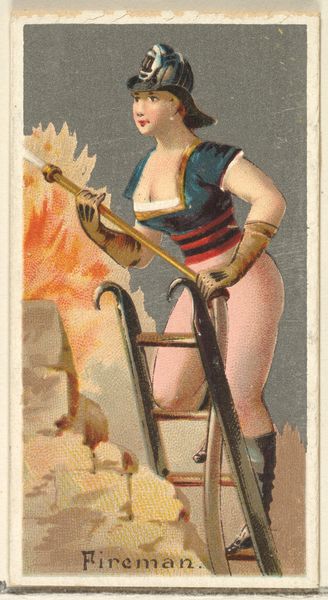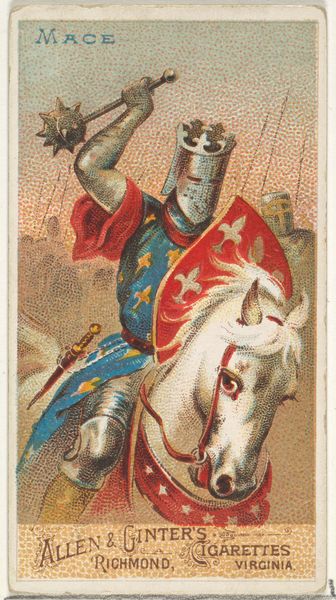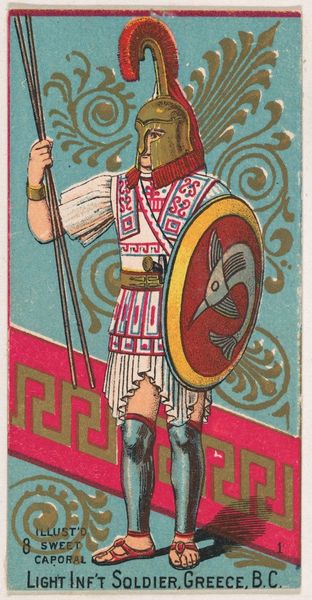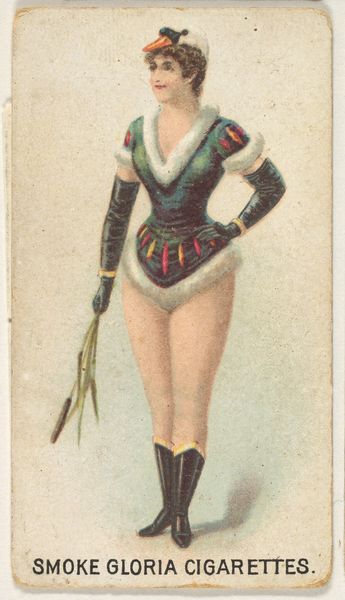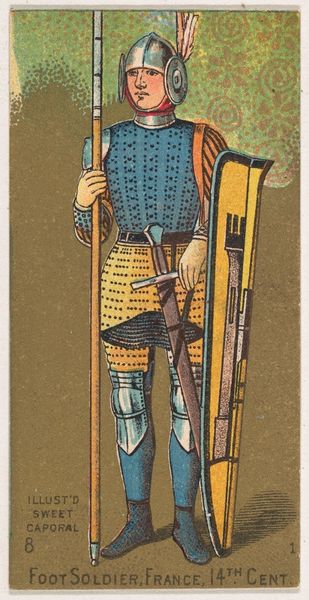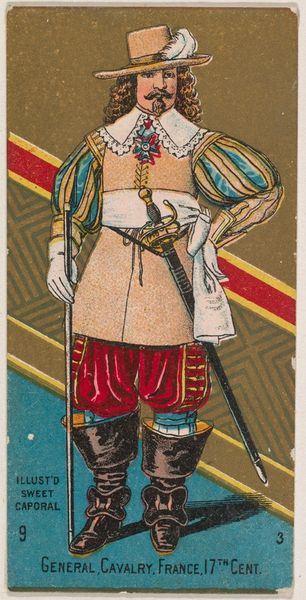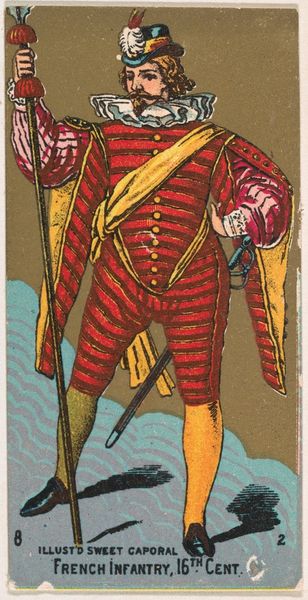
Gladiator's Sword, from the Arms of All Nations series (N3) for Allen & Ginter Cigarettes Brands 1887
0:00
0:00
drawing, coloured-pencil, print
#
drawing
#
coloured-pencil
# print
#
coloured pencil
#
armor
#
sword
Dimensions: Sheet: 2 3/4 x 1 1/2 in. (7 x 3.8 cm)
Copyright: Public Domain
Editor: This vibrant coloured pencil drawing, “Gladiator’s Sword,” part of the Arms of All Nations series from 1887, strikes me as almost theatrical. It's so stylized! What enduring symbols or cultural echoes do you recognize in this piece? Curator: I see a complex interplay of power and spectacle. The gladiator, stripped of individual identity by his helmet, becomes a symbol of brute force and controlled violence. Note how the artist depicts the gladiator's belt, adorned with skull imagery. This is a clear memento mori, a reminder of death’s presence even in moments of glory. How do you feel this symbol functions in relation to the image's commercial function, advertising cigarettes? Editor: It's jarring! Like glamourising violence to sell tobacco. But the series is about “Arms of All Nations” … does the gladiatorial imagery signify anything particular about ideas of nationhood at the time? Curator: Indeed, the selection is revealing. Gladiatorial combat, though Roman in origin, becomes a shorthand for civilizations built on conquest and military strength, mirroring 19th-century imperial ambitions. This symbol tapped into a fascination with classical heroism even as industrial capitalism transformed society. Can we consider a potential visual link in the popular imagination between gladiators and soldiers who also wear uniforms? Editor: Absolutely. There’s this romantic idea of the noble warrior. It's unsettling how symbols of ancient conflict are repurposed for consumer culture, seemingly normalizing violence and territorial ambitions. Curator: Precisely. This illustrates how deeply ingrained certain symbols are in our collective memory and how readily they can be manipulated to serve contemporary agendas. An enduring and complicated image. Editor: Definitely makes you think about what imagery endures, and to what end. Thanks for sharing your insights!
Comments
No comments
Be the first to comment and join the conversation on the ultimate creative platform.
